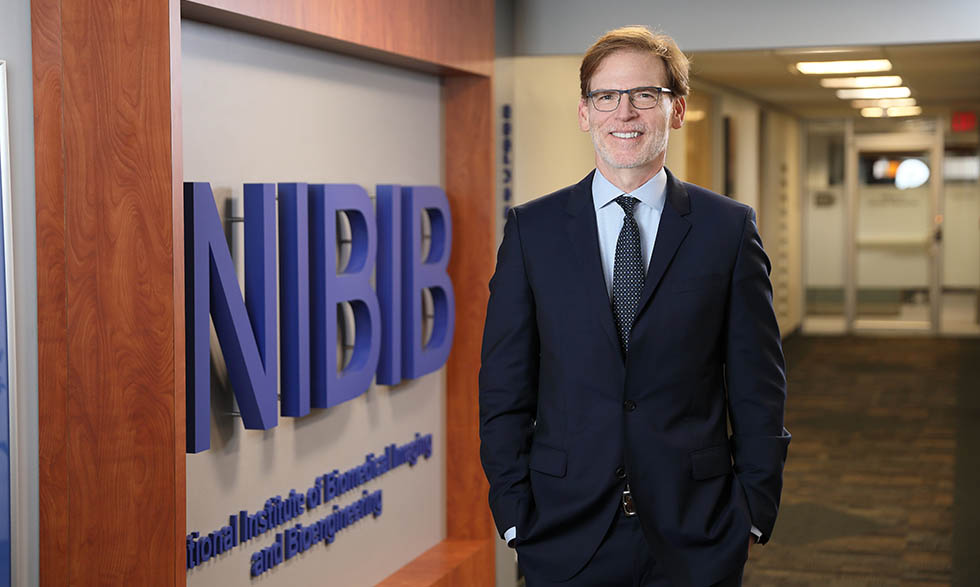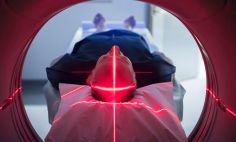For the National Institute of Biomedical Imaging and Bioengineering (NIBIB), 2020 is an important year. It marks the 20th anniversary of public law establishing the institute, as well as the one-year anniversary of the leadership of NIBIB Director Bruce J. Tromberg, Ph.D.
Dr. Tromberg became the director of NIBIB in January 2019, but his connection to the National Institutes of Health (NIH) started long before then. As a student in the early 1970s, Dr. Tromberg had an opportunity to work as an intern with Stan Shackney, M.D., at the National Cancer Institute (NCI). Dr. Shackney was developing a model simulating the growth of cancer cells and their response to chemotherapy treatment. This pioneering example of how cutting-edge technology could be used to both understand biology and improve patients' lives helped shape Dr. Tromberg's career.
"We need to continue to nurture the growth of the engineering and physical science community in biology and medicine."
- Bruce J. Tromberg, Ph.D.
Dr. Tromberg's area of expertise is optics and photonics, the study of light and light-based technologies—think lasers and fiber optics. He is a pioneer in "biophotonics," the application of these technologies to biology and medicine. Photonics is not just an area of study for Dr. Tromberg; it's also a passion. He can talk about a wide range of technologies, from the lasers and detectors found in high-powered microscopes to the sensors and light sources in consumer cameras and smartphones.
Dr. Tromberg brings that passion to all the work he and his staff do at NIBIB. He shared highlights of some of that work, information about the field, and advice for future bioengineers.
What's important for NIBIB right now and going into this next decade?
Our major areas of focus revolve around math—computation, modeling, and artificial intelligence. The NIBIB community is leading the development of these tools to understand all kinds of health-related information, whether it is coming from blood chemistries, the genome, or sensing and imaging technologies. A big challenge for us is integrating all of this data into better models of life processes that we can use to give doctors and patients more powerful and practical tools for personalized health and medicine.
What's an example of how life processes can be engineered?
Engineers and physical scientists have been developing methods to mathematically represent complex cellular processes. This is helping accelerate the growth of engineered biological systems that span from one single cell all the way to multicellular systems, like engineered organs. In general, researchers are developing these approaches to replace or repair tissues and organs, as well as provide "organ simulators" for testing drugs and understanding how the body works.
Why are technology and engineering so important in medicine?
When you go to the doctor's office or hospital and have imaging done, say, an MRI, CT scan, or an ultrasound, there's a lot of beautiful and complicated technology that goes into creating that image. The big impact for patients is that we can routinely form very sophisticated images, and this has virtually eliminated the practice of "exploratory surgery." We can also compare images and follow changes in people over time to detect, diagnose, and treat disease more effectively.
How has this field changed over time?
Technology has always been part of medicine, both as a way to understand life processes as well as a way to provide practical solutions to hard problems. Think of the bypass machine—that was introduced by engineers in the early 1950s. What's happened in the two decades since NIBIB was formed is an explosion of technologies driven by the disruptive power of consumer electronics, computing, and the internet. Our world has changed from being dominated by mechanical tools to electronic- and photonic-based tools. It's not surprising that these tools have been integrated into virtually every aspect of our lives, including new sensing, imaging, and therapeutic technologies for medicine.
How can we continue improving this area of research?
We need to continue to nurture the growth of the engineering and physical science community in biology and medicine. It's well known that new discoveries are almost always connected to new tools. In addition to constantly improving existing technologies, our community is always thinking about doing even better. This is how the next generation of "game-changing" biomedical technologies will be developed.
What do you recommend for young people interested in the field?
Keep exploring, keep digging, and keep pursuing things you're interested in, even beyond science. Read a lot of books to help refine your communication skills and learn about great ideas from all disciplines. Seeing connections between scientific fields, and between science, engineering, and the humanities, will help inspire and inform you throughout your career as a bioengineer.







